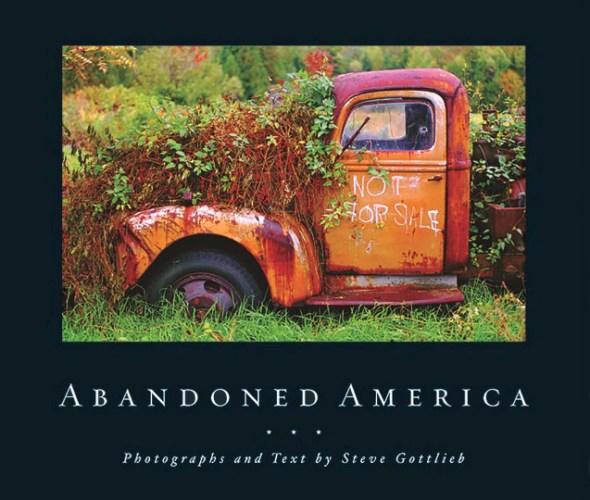I taught a workshop at the Horizon Summit in Delaware a few years ago. The founder, Steve Gottlieb, and his wife, Anne, graciously offered me to stay in their home. I’m glad I accepted the invitation. What started out with a cup of coffee around the breakfast table, ended with a wealth of knowledge from a man who stepped down from being a lawyer to pursue his passion for photography.
I learned from our chats that Steve has a successful career as a commercial photographer; but it is his ability to limit himself and focus on personal projects that gained him notoriety.
Traded a law degree for a camera
I asked him if he was crazy, leaving law for photography. He laughed and said his father thought so too. On a long walk with his father, well-known jazz photographer, author and writer William P. Gottlieb, Steve revealed his plans to leave law and become a photographer.
Steve was hoping for an enthusiastic approval. Instead, his father asked him if he was crazy. His fathers advice: Don’t do it! But Steve’s mind was made up and he traded his law degree for a camera. Steve’s path would have made his father proud, if he’d lived to see it.
Steve’s personal project: “Abandoned America”
“Hidden among our present were the vestiges of days long forgotten. They are pieces of our history — they are the incidentals of our collective American genealogy. They are the human-made objects and structures that have outlived their functions, becoming part of the abandoned periphery.”
With a mission in mind and a clear purpose, Steve traveled from coast to coast capturing images from bygone eras. When he returned, he compiled his images into the book, “Abandoned America.”
.mgl-tiles { display: none; } #mgl-gallery-634ee0650489e { margin: -5px; width: calc(100% + 10px); } #mgl-gallery-634ee0650489e .mgl-box { padding: 5px; } @media screen and (max-width: 768px) { #mgl-gallery-634ee0650489e { margin: -5px; width: calc(100% + 10px); } #mgl-gallery-634ee0650489e .mgl-box { padding: 5px; } } @media screen and (max-width: 460px) { #mgl-gallery-634ee0650489e { margin: -5px; width: calc(100% + 10px); } #mgl-gallery-634ee0650489e .mgl-box { padding: 5px; } }




Start a personal project
After I taught my class, I attended a lecture Steve was giving on starting a personal project. He suggested we start by photographing interesting things we do in our daily lives. During the Q&A portion, a woman named Jill asked, “How do you find inspiring things to photograph, I don’t have anything interesting in my life?”
Being the exceptional teacher he is, Steve asked her questions to help her find the answer. After a few questions, Jill revealed she took over her family’s farm from her father. She talked about things that have changed on the farm over the years and what things on the farm reminded her most of her father. In the end, Steve suggested she photograph her family’s farm and create a coffee-table book to give as a gift to family members at Christmas. If the book sells, great. If not, at least she had preserved special memories for her family. The smile on Jill’s face was priceless.
Steve’s five key elements for creating a book from your personal project
While I was researching this article, I had the pleasure of talking with Steve on the phone. I’ve outlined Steve’s five key elements for creating a self-published book:
- Passion: You have to have passion about the subject and want to stay with it for a long period of time. This will help push you forward in an almost irrational way.
- Develop different ways to photograph your subject: This will prevent the images from becoming redundant and will hold the viewer’s attention from page to page.
- Staying power and patience: Once you get into a project in depth, you’ll realize there is more to it than you originally thought and it will take more time to fully explore it. As you reach the middle of your project, you may realize your photos might not be as good or up to your standards. Don’t run out of gas and use just OK photos.
- Be open to critique: Don’t depend on your own opinion. Find three people you trust and ask their advice. Sort your images into three stacks: Great, pretty good and you can’t be serious! If two of the three choose a photo and put it in the You can’t be serious pile, think long and hard if you should keep the photo.
- Think about the sequence of images: Make sure the images flow from page to page. Think about subject matter and color. Show your book to someone and watch their reaction. You’ll know if your layout is effective when the viewer looks at the left page, then the right page, then back at the left page. This indicates they have noticed a relationship between the pages.
Tell your story with the second annual Visual Storytelling Conference!
Experience four days of interactive, online training sessions featuring a range of educational content with experienced photographers and content creators. This free event kicks off with a series of technical boot camps to build essential skills, followed by live, online sessions on photography, video, business and social media. Join live from March 10-13, 2022!
